SPIDER MONKEY CONSERVATION PROJECT





ANNUAL REPORT 2022









Project Coordinator: Diana Liz Duque Sandoval
Participants: José Paipa

Emilio Gomez
Rafael Virigay
Harrison Melgarejo
SPIDER MONKEY CONSERVATION PROJECT
ABOUT US

The Spider Monkey Conservation Project is a non-profit Civil Association whose main objective is the long-term conservation of the spider monkey Ateles hybridus, the fauna and the last forest of the Caparo Forest Reserve in Barinas state in Venezuela.

OBJETIVES

Conducting scientific research about the spider monkey populations and its habitat in the Caparo Forest Reserve.
Implementing actions to conserve the spider monkey populations and its habitat in the Caparo Forest Reserve.
Implement an environmental education program to raise awareness among local community about the importance of preserving this species and its habitat in the Caparo Forest Reserve.

Incorporate the local community in projects involving sustainable practices for the maintenance of forests and biodiversity.
DIANA LIZ DUQUE SANDOVAL (Conservation Biologist and photographer) PROJECT FOUNDER AND DIRECTOR
“From the first day I arrived in Caparo I was able to observe the spider monkeys and their very vulnerable situation, that was my motivation to create this long-term project”
SPIDER MONKEY CONSERVATION PROJECT
STUDY AREA:
Caparo Forestry Reserve is located in the Municipality of Ezequiel Zamora, south-western state of Barinas, in Venezuela’s western plains. The reserve is on the south bank of the Caparo River, the Interior Plain of Western Venezuela and Eastern Colombia, a flat lowland at the foot of the Andes.




Caparo reserve covered originally an area of 184,100 ha. After years of deforestation, currently survive less than 7,000 ha of continuous forest. This 7,000 ha constitute the Caparo Experimental Station that is owned by the University of the Andes (ULA) since 1970, and it is protected under the figure of Commodatum contract between ULA and the Ministry of the Environment. From the biogeographic point of view Caparo Experimental Station is located in the Colombo-Venezuelan Llanos region. Caparo Forest Reserve is classified as a tropical dry forest, a designation based on the Holdridge Life Zone System of vegetation classification (Holdridge, 1967). According to Janzen (1988), it is a tropical dry forest, which is the most endangered major tropical ecosystem in the world.
 Location of the Caparo Forest Reserve in Venezuela
Location of the Caparo Forest Reserve in Venezuela
CONSERVATION ACTION: CAPARO RANGERS PROJECT
OBJETIVE
Carry out tours of the forest to prevent entry of people, invasions, hunting, prevention of forest fires, reforestation activities and early detection of any damage to the forest.


JUSTIFICATION
Due to the country's crisis and low labor wages, the Caparo Experimental Station of the Universidad de los Andes does not have the resources to maintain itself, so it has been without staff since 2018, the year of the illegal occupation of people that affected the forest, the station was left alone and without carrying out none of its own activities that it carried out in its good times, such as research and student internships, the camp is deteriorated, making it a risk for illegal occupants to take over the place. Therefore, it was necessary to maintain personnel carrying out surveillance and permanence tasks to maintain the forest, so the Spider Monkey Project with initial support from Auckland Zoo created the Caparo Ranger project in 2018. Currently the forest continues alone. The university has not started activities yet, although it has some workers working in the surveillance and maintenance of the area of the camp facilities.
CONSERVATION ACTION: CAPARO RANGERS PROJECT

THE RANGERS
Jose Melgarejo Paipa
33 years of experience as a guide and connoisseur of the forest, at the Universidad de los Andes.
Active retiree
Harrison Melgarejo
New ranger, start in August 2021. Born in the Caparo Forest Reserve

Emilio Gomez
14 years of experience as a guide and connoisseur of the forest, at the Universidad de los Andes.

Rafael Virigay
31 years of experience as a guide and connoisseur of the forest, at the Universidad de los Andes.


CONSERVATION ACTION: CAPARO RANGERS PROJECT

The main activities carried out during the trips in 2022 were:
• Trips were carried out through the main surveillance routes previously established on foot within the forest and by motorcycle in the surroundings
• A wildfire occurred in March 2022 that was brought under control by the rangers
• One hunter lookouts were detected and destroyed
• Surveys and surveillance of the different natural wells of the forest were carried out to prevent hunting

• The presence of a hunter was detected through a motorcycle found in the forest, he was informed to the National Guard who took away a homemade weapon
• Monitoring the groups of spider monkeys in the forest
• There were no illegal occupation attempts, only in January 2022 the entry of people who made an opening in the ground for water extraction was observed
• The rangers worked with the collection of seeds and planting with the "al voleo" method of various species of trees for the burned area
• The rangers helped with the collection of garbage, which people began to throw away in areas of the forest, and they made a prohibition fence
MAIN SURVEILLANCE ROUTES
The following image shows the main routes traveled by the rangers, in yellow already established internal pikes traveled on foot, in red north and south routes by motorcycle. The pikes are small routes that are opened on the forest to move more easily. During 2022, the northern and western areas were considered the most vulnerable and where the greatest number of routes were made, since it is easier for people to enter the most central areas of the forest to hunt from here, for which reason increased vigilance in this place were carried out. The lower yellow lines were rarely walked due to the shortage of gasoline, in addition there is little entry of people into the forest through this area, due to the water channel that limits it
CONSERVATION ACTION: CAPARO RANGERS PROJECT
FOREST FIRE CONTROL IN MARCH 2022
For 15 days a provoked forest fire occurred in area 5 of the forest, burning approximately 60 hectares.
The rangers were controlling it using the donated equipment, with water, making a firebreak and cutting burned logs. Additionally, 3 community volunteers helped us


CONSERVATION ACTION: CAPARO RANGERS PROJECT
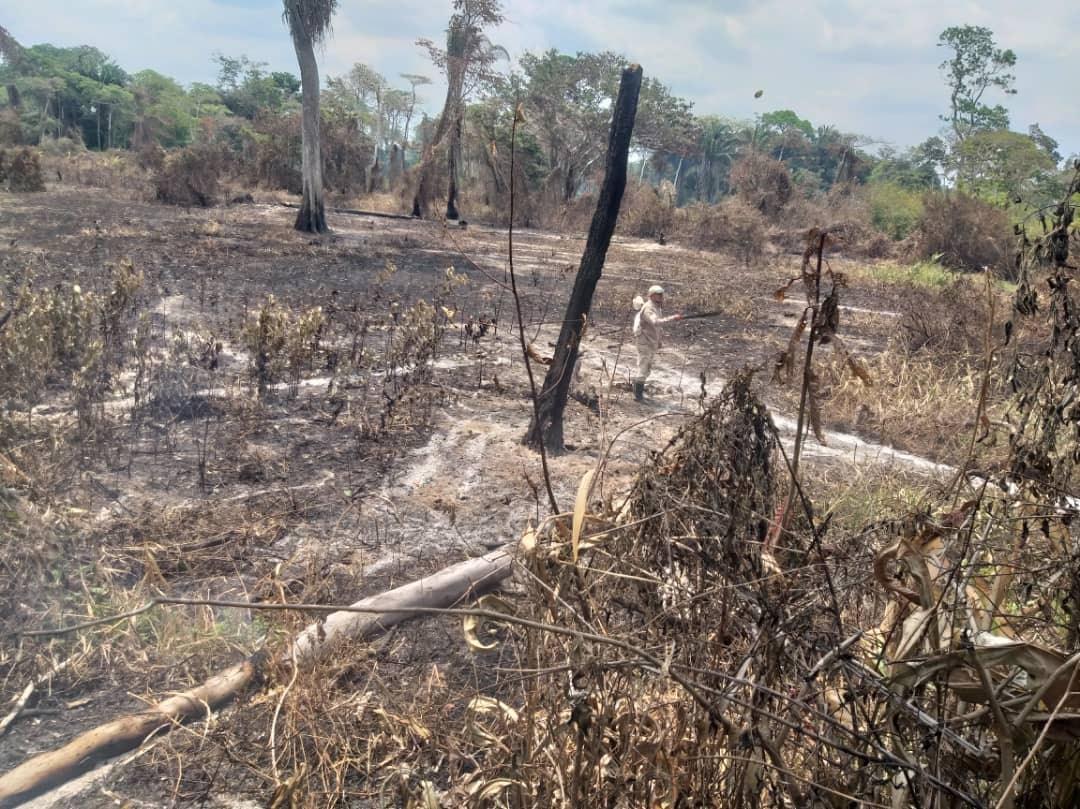

FOREST FIRE CONTROL

CONSERVATION ACTION: CAPARO RANGERS PROJECT


FIRE CONTROL
FOREST
CONSERVATION ACTION: CAPARO RANGERS PROJECT
FOREST FIRE CONTROL
Making a firebreak


CONSERVATION ACTION: CAPARO RANGERS PROJECT
FOREST FIRE CONTROL
Cutting burned logs


CONSERVATION ACTION: CAPARO RANGERS PROJECT

SEED COLLECTION


The rangers worked with the collection of seeds and planting with the "al voleo" method of various species of trees for the burned area

 Drago (Croton sp.) tree seeds
Guamo (Inga sp.) tree seeds
Masaguaro tree seeds
Drago (Croton sp.) tree seeds
Guamo (Inga sp.) tree seeds
Masaguaro tree seeds
“AL VOLEO” SOWING
This method consists of spreading the seedlings and regenerating seedlings directly in the area, the disadvantage with this method is that the birth of the plant is left to chance, compared to the care that is taken with a nursery.




Some of the collected species were Carocaro (Enterolobium cyclocarpum), Apamate (Tabebuia rosea), Cano fistola (Cassia grandis), Roble (Platymiscium sp.) , Guamo (Inga sp.), Drago (Croton sp.), Melina (Gmelina arborea), Mijao (Anacardium excelsum), Saman (Samanea saman)

SEED COLLECTION CONSERVATION ACTION: CAPARO
PROJECT
RANGERS
CONSERVATION ACTION: CAPARO RANGERS PROJECT




Burned area
Seeds and regeneration planted in the burned area
Apamate (Tabebuia rosea)
SEED COLLECTION
CONSERVATION ACTION: CAPARO RANGERS PROJECT



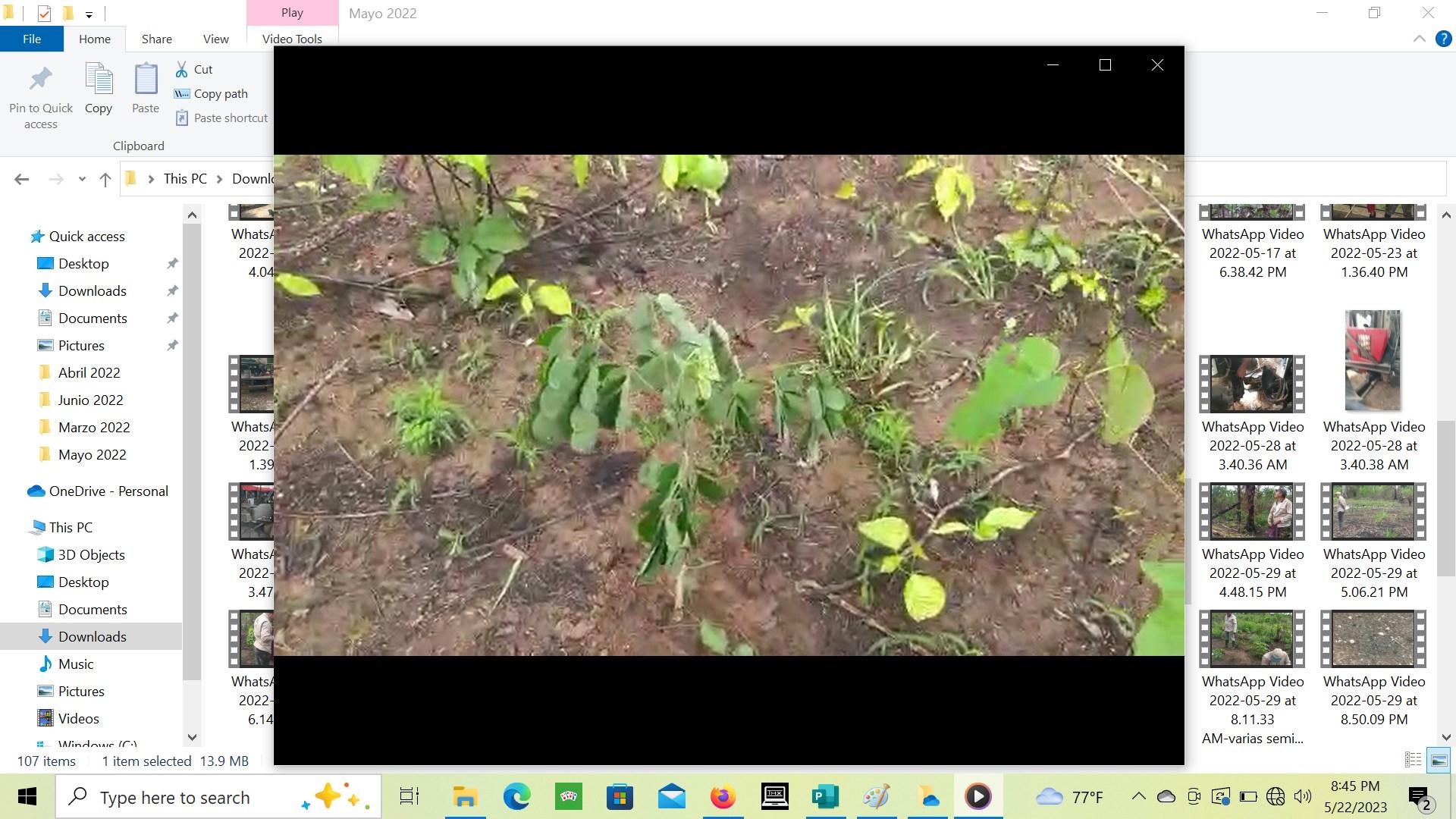

CONSERVATION ACTION: CAPARO RANGERS PROJECT

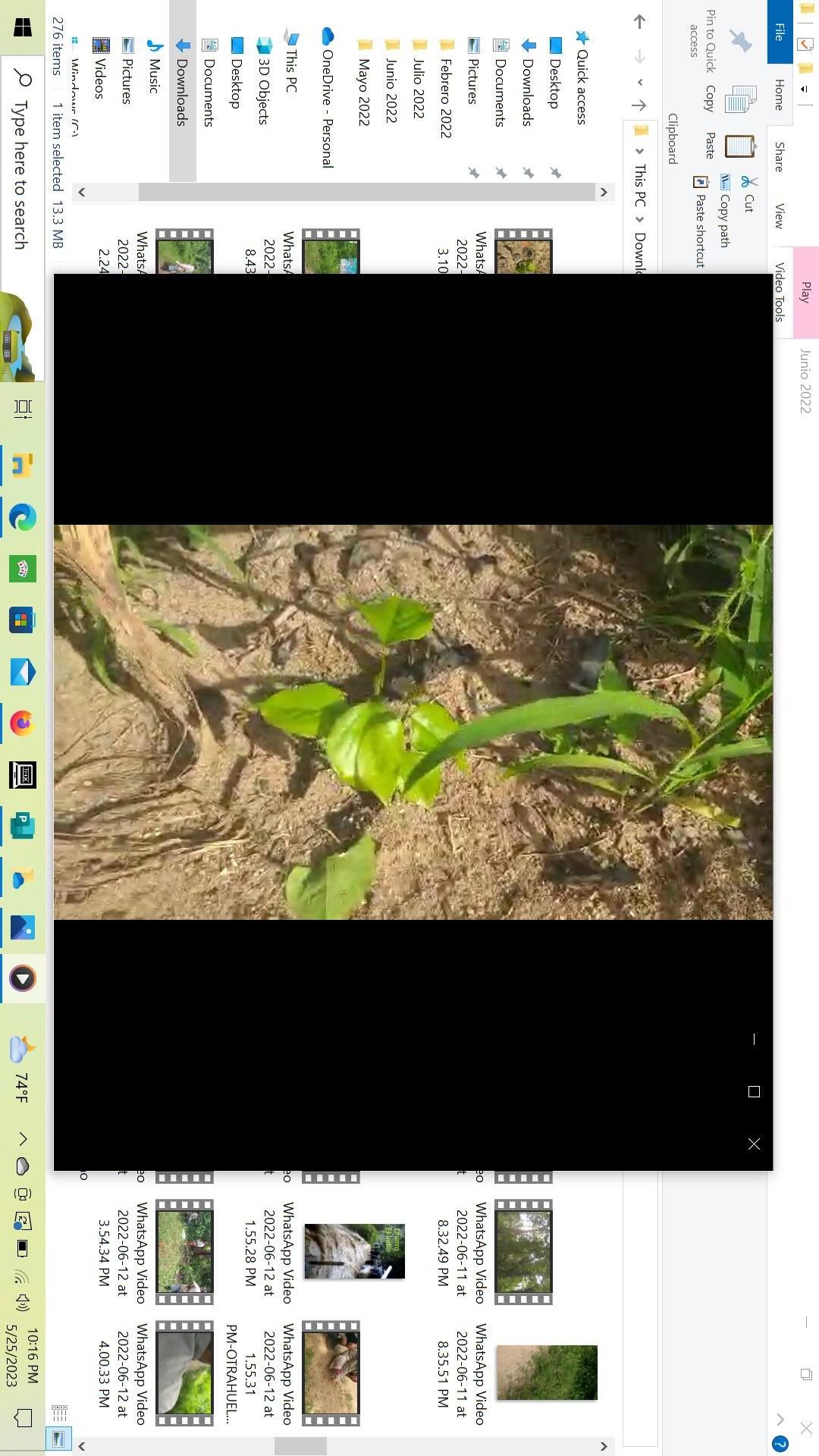



 Melina (Gmelina arborea)
Melina (Gmelina arborea)
GERMINATION OF DISPERSED SEEDS
CONSERVATION ACTION: CAPARO RANGERS PROJECT



SEEDLING REGENERATION
CONSERVATION ACTION: CAPARO RANGERS PROJECT
Collection of Perhuetamo seeds for regeneration attempt
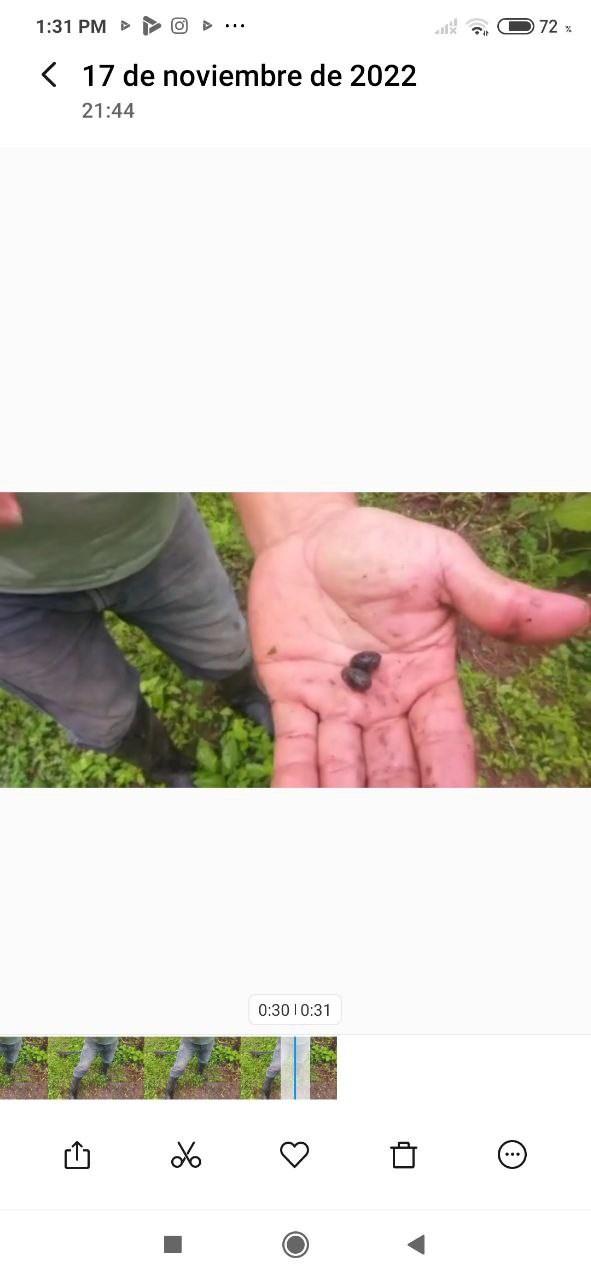
The perhuetamo tree is a species of tree endemic to Venezuela, specifically from the Caparo Forest Reserve, which is in danger of extinction, it is a fruit tree used by many animals. Unfortunately, the seeds sown did not germinate, due to a problem with the seed, natural regeneration in the forest is not found either


CONSERVATION ACTION: CAPARO RANGERS PROJECT
EVALUATION OF NATURAL PONDS
The natural ponds of the forest are frequently visited, since they are the favorite sites of hunters, where different animal footprints were observed such as: Jaguar, peccary, tapir


There are about 15 natural ponds in the Caparo forest that we want to recover with another project, since in the dry season they run out of water affecting many animals.


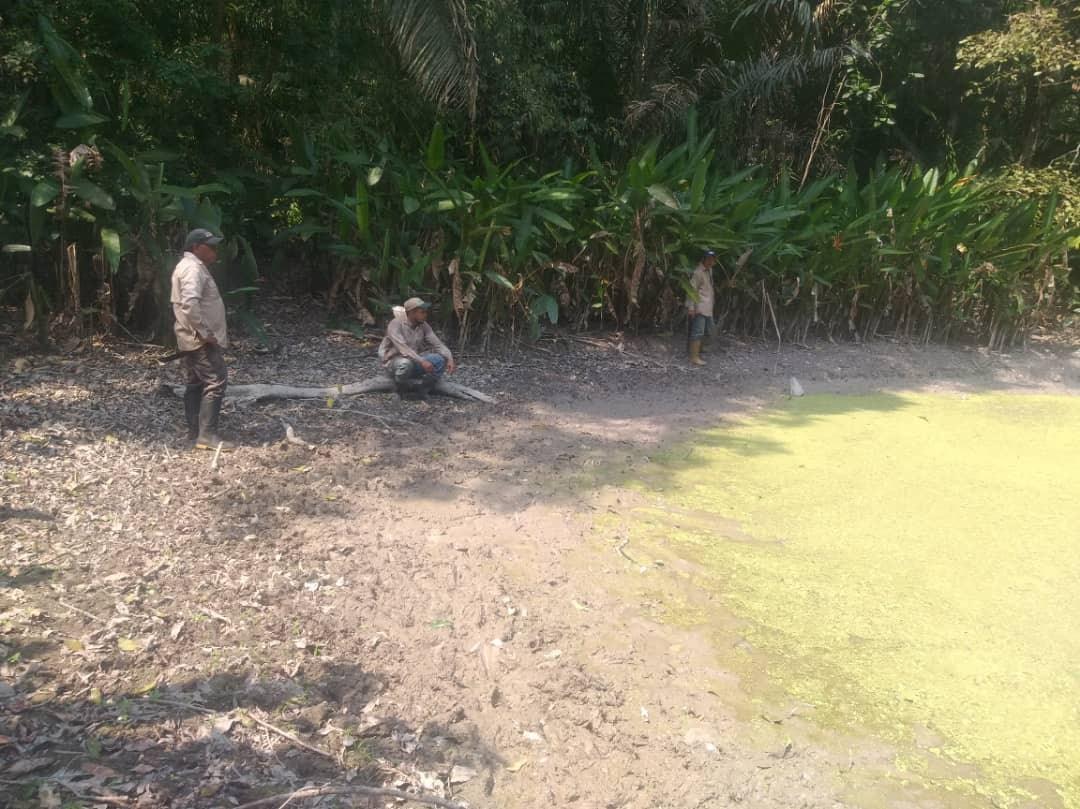
CONSERVATION ACTION: CAPARO RANGERS PROJECT
DETECTION OF SOME ENVIRONMENTAL ILLICIT IN THE FOREST


• During 2022, only 1 hunting lookout was found during the tours. Hunter lookout are sites made with wood where hunters wait for fauna to kill them, mainly limpets and picures in the dry season.
• A cut tree was found, but it was not known who was responsable
• A hunter was found inside the forest
• A person placed an illegal fence inside the forest who was told to remove it, and accepted the order
• We have found garbage in some parts of the forest

CONSERVATION ACTION: CAPARO RANGERS PROJECT

DETECTION OF SOME ENVIRONMENTAL ILLICIT IN THE FOREST

The presence of a hunter was detected through a motorcycle found in the forest, he was informed to the National Guard who took away a homemade weapon
In January 2022 the entry of people who made an opening in the ground for water extraction was observed

CONSERVATION ACTION: CAPARO RANGERS PROJECT


The rangers helped with the collection of garbage, which people began to throw away in areas of the forest, and they made a prohibition fence


CONSERVATION ACTION: CAPARO RANGERS PROJECT

Limite Palma Pintada
Limite Palma Pintada
Limite Palma Pintada
Limite Palma Pintada
Limite Palma Pintada
Limite Palma Pintada
Limite Palma Pintada
Pica 9
Pica 8 sur
Pica 8 norte
Pica 8 norte
Pica 8 norte
Pica 9
Pica 8 central
Pica 8 central
Pica 8 central
Pica 8 central
Pica 7 P74
Pica7
P74
P7
Area 3
Area 3
Pica 5
Pica 5
Pica 5 Cano anaru
N.º OBSERV LOCALIDAD COORDENADAS N.º DE INDIVIDUOS 1 2 3 4 5 6 7 8 9 10 11 12 13 14 15 16 17 18 19 20 21 22 23 24 25 26 27 28
SPIDER MONKEY GROUP OBSERVATIONS IN 2022
7°27'21.92"N - 71° 2'52.11"W 7°27'1.83"N - 71° 2'33.72"W 7°26'21.67"N - 71° 2'11.55"W 7°25'59.07"N - 71° 2'6.49"W 7°25'5.73"N - 71° 2'17.87"W 7°25'3.83"N - 71° 2'2.70"W 7°25'12.62"N - 71° 1'51.93"W 7°27'38.86"N - 71° 2'0.17"W 7°27'46.71"N - 71° 1'37.15"W 7°28'5.36"N - 71° 1'48.66"W 7°28'10.38"N - 71° 1'33.84"W 7°28'6.13"N - 71° 1'14.72"W 7°26'35.73"N - 71° 1'28.35"W 7°27'11.53"N - 71° 1'10.06"W 7°27'31.88"N - 71° 0'48.50"W 7°27'32.96"N - 71° 0'36.99"W 7°27'1.32"N - 71° 0'35.56"W 7°27'59.29"N - 70°59'44.09"W 7°28'7.33"N - 70°59'31.81"W 7°27'37.82"N - 70°59'49.72"W 7°27'45.87"N - 70°59'22.49"W 7°26'56.90"N - 70°59'18.06"W 7°27'53.40"N - 70°58'46.04"W 7°28'3.83"N - 70°58'30.96"W 7°27'8.64"N - 70°57'15.68"W 7°27'3.30"N - 70°57'8.96"W 7°26'30.70"N - 70°57'25.13"W 7°25'27.93"N - 71° 3'59.13"W 15 6 8 6 hembras con cria 25 8 15 adultos, 5 crías 20 2 machos 2, macho y hembra
Table of some observations of groups of spider monkeys in the Caparo forest during ranger walks in 2022
Locations of some observations of spider monkeys (Ateles hybridus) during ranger walks in 2022 Absences at the bottom indicate fewer trips to that area
CONSERVATION ACTION: CAPARO RANGERS PROJECT

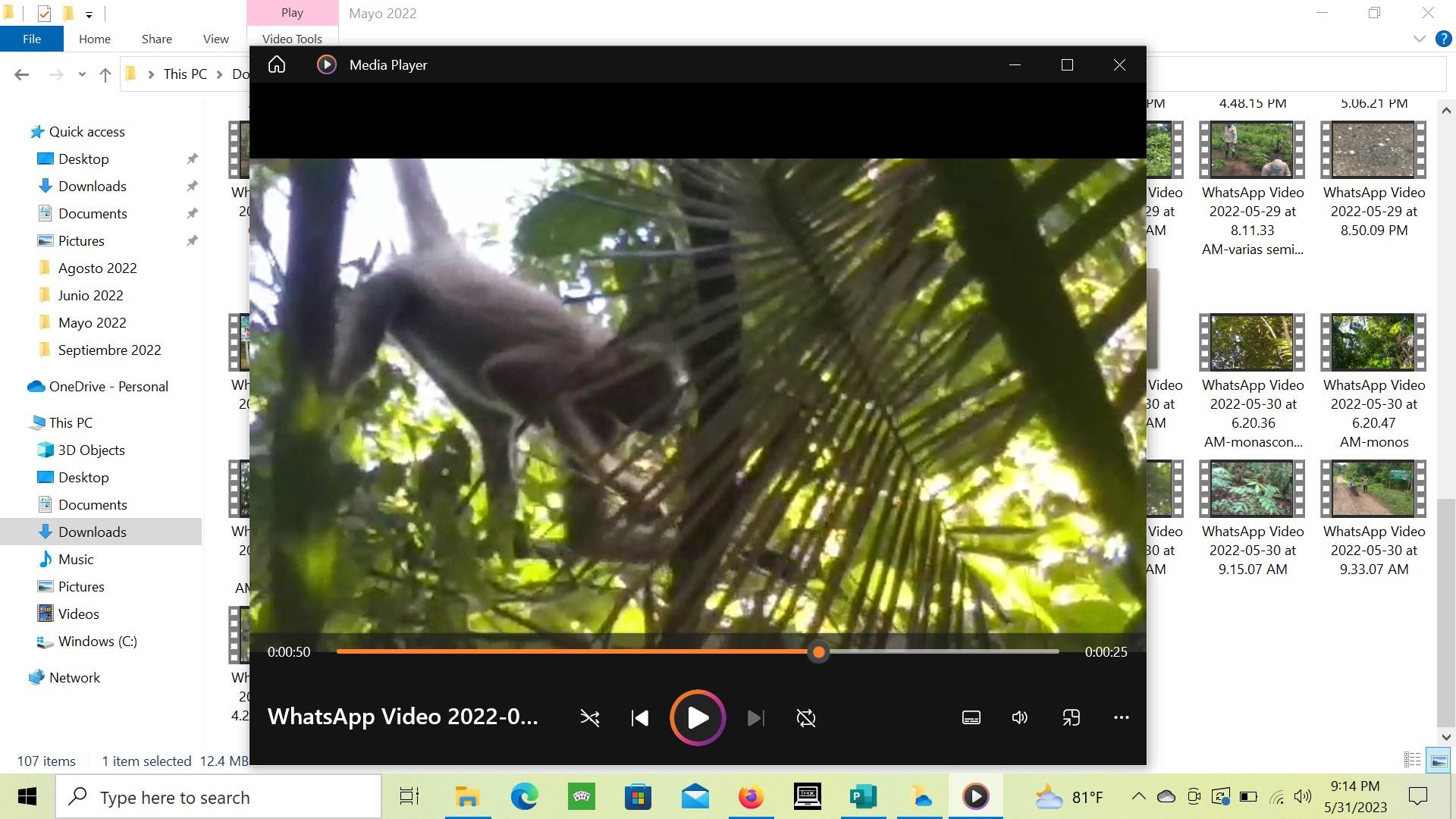
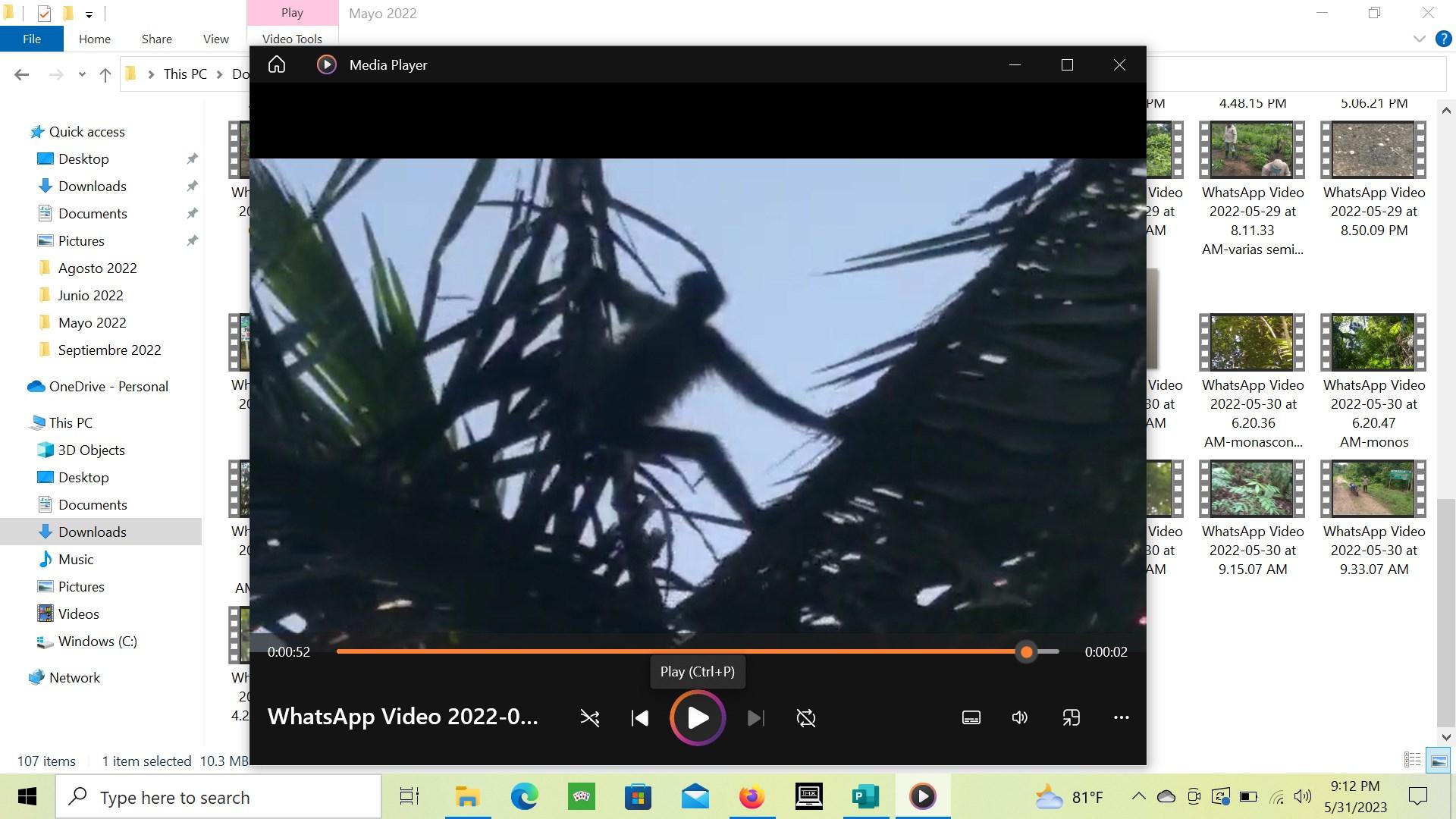

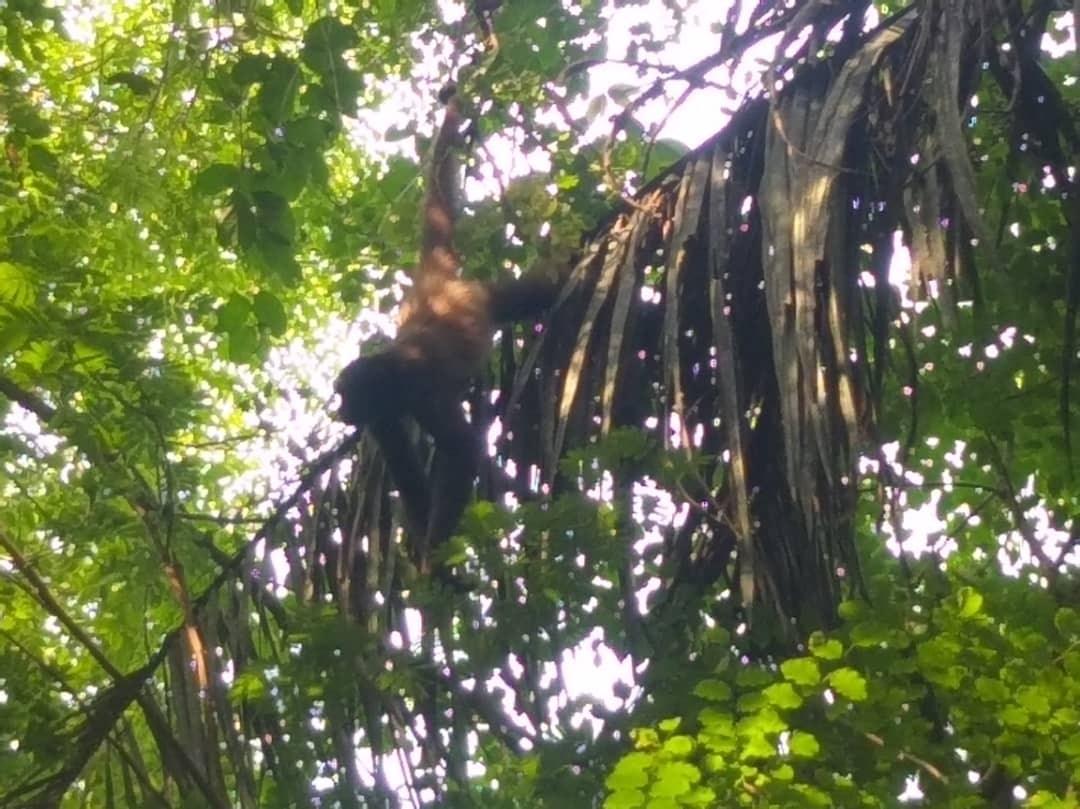

 SPIDER MONKEY GROUP OBSERVATIONS IN 2022
SPIDER MONKEY GROUP OBSERVATIONS IN 2022
CONSERVATION ACTION: CAPARO RANGERS PROJECT
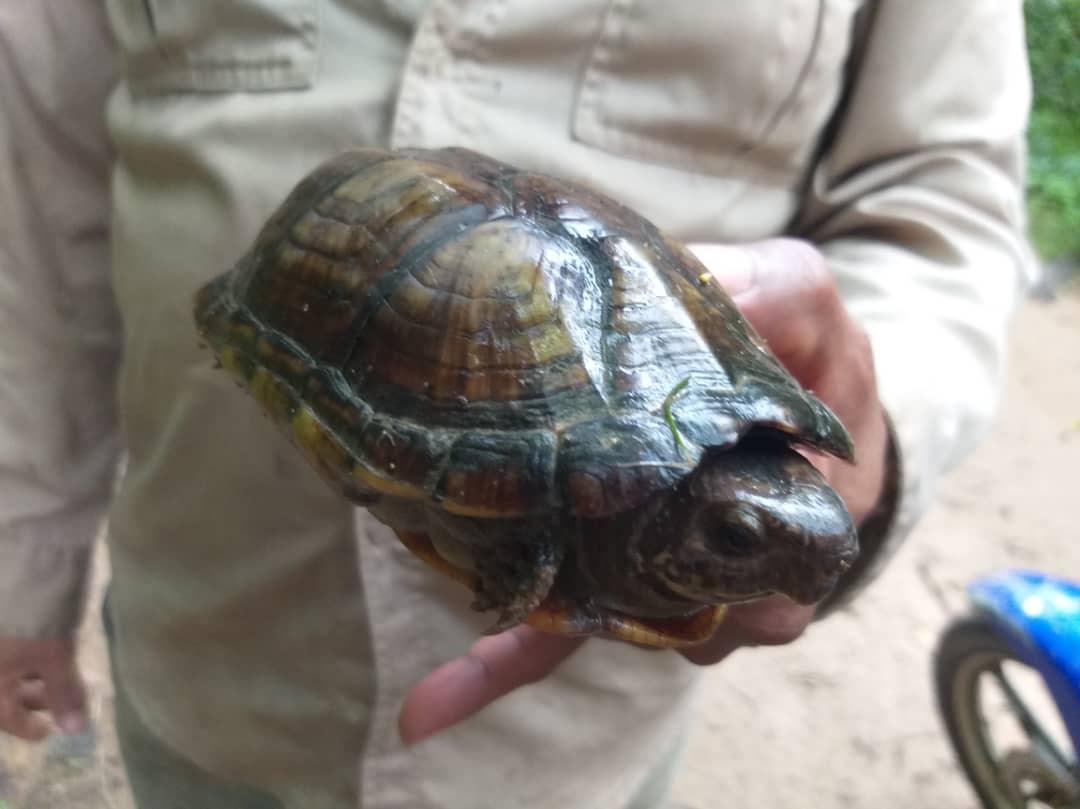



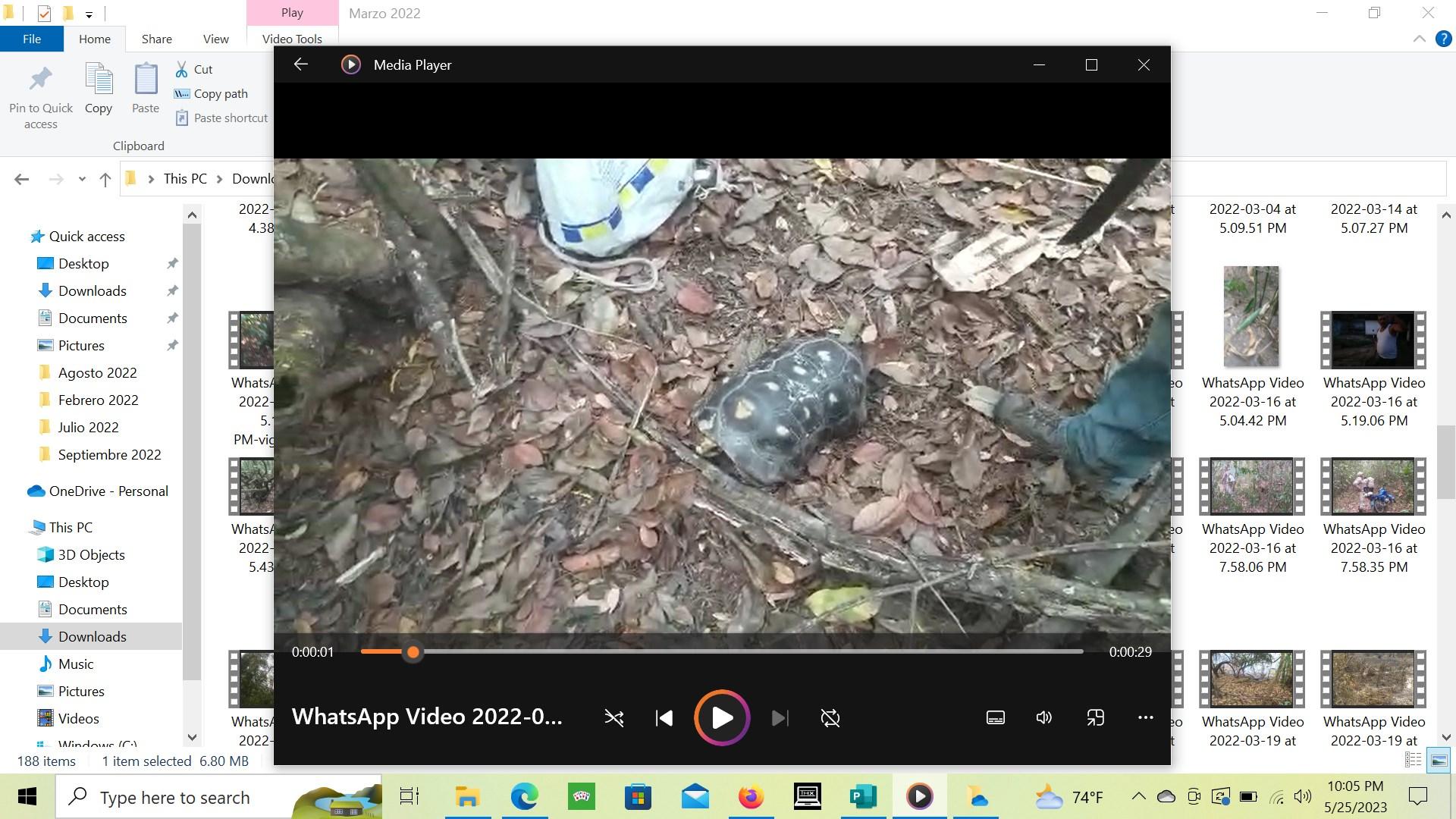
 Cyriocosmus sp.
Water turtle
Cyriocosmus sp.
Water turtle
CONSERVATION ACTION: CAPARO RANGERS PROJECT





 Erythrolamprus dorsocollarinus
Giant South Amerian Snail (Megalobulimus oblongus)
Boa constrictor
Larvas mojojoy
Erythrolamprus dorsocollarinus
Giant South Amerian Snail (Megalobulimus oblongus)
Boa constrictor
Larvas mojojoy
CONSERVATION ACTION: CAPARO RANGERS PROJECT



Boa tornasol (Epicrates maurus)


SPIDER MONKEY CONSERVATION PROJECT



Latest satellite image, Sentinel 2 MSS 6/12/2022;
thanks to Victor Navarro, Geographer
Burned area
SPIDER MONKEY CONSERVATION PROJECT


During 2022 we were unable to meet the research and environmental education objectives, due to lack of resources.
Auckland Zoo has just approved a research project and an environmental education project.
This year we continue working with the Caparo Ranger Project and we want to maintain the educational and reforestation projects annually, as well as more research projects with the groups of monkeys in the forest and monkeys in forest fragments. We need to keep monitoring the spider monkeys that are isolated in the Anaru Caño, working with the community to find a way to restore degraded areas to make an ecological corridor. We need to acquire camera traps and a drone to monitor the presence of other mammals and degraded areas.
Another proposal is the creation of a biological station, fixing some abandoned houses that are in the area of the university camp.
Our main difficulty is the problem of gasoline that prevents us from going to remote places by motorcycle, there are no gas stations nearby and we cannot store gasoline, the closest towns are 1 hour from the reserve. In the past, gasoline from one of the university vehicles was used, we also went to some places with this vehicle, but currently all are damaged.




Proyecto Mono Araña / Spider Monkey Project @proyecto_ateles E-mail: proyectoateles@gmail.com SPIDER MONKEY CONSERVATION PROJECT
Thank you all for supporting this project, this help has been vital for the protection of the Caparo forest and its biodiversity


SPIDER MONKEY CONSERVATION PROJECT





CAÑO ANARÚ


























 Location of the Caparo Forest Reserve in Venezuela
Location of the Caparo Forest Reserve in Venezuela
























 Drago (Croton sp.) tree seeds
Guamo (Inga sp.) tree seeds
Masaguaro tree seeds
Drago (Croton sp.) tree seeds
Guamo (Inga sp.) tree seeds
Masaguaro tree seeds



















 Melina (Gmelina arborea)
Melina (Gmelina arborea)




























 SPIDER MONKEY GROUP OBSERVATIONS IN 2022
SPIDER MONKEY GROUP OBSERVATIONS IN 2022





 Cyriocosmus sp.
Water turtle
Cyriocosmus sp.
Water turtle





 Erythrolamprus dorsocollarinus
Giant South Amerian Snail (Megalobulimus oblongus)
Boa constrictor
Larvas mojojoy
Erythrolamprus dorsocollarinus
Giant South Amerian Snail (Megalobulimus oblongus)
Boa constrictor
Larvas mojojoy
















